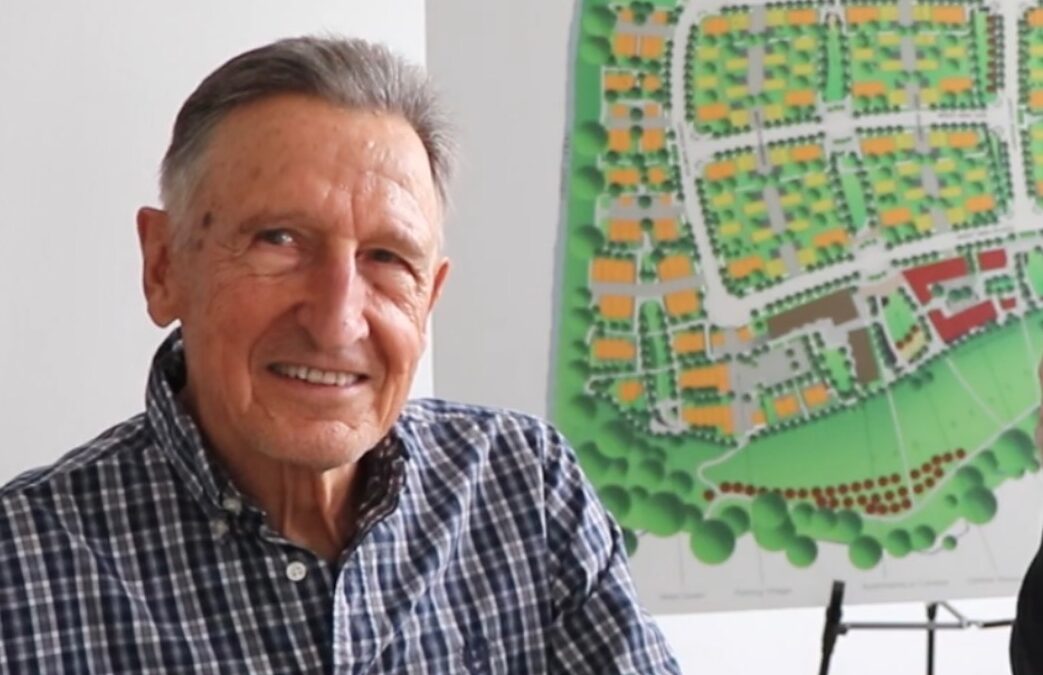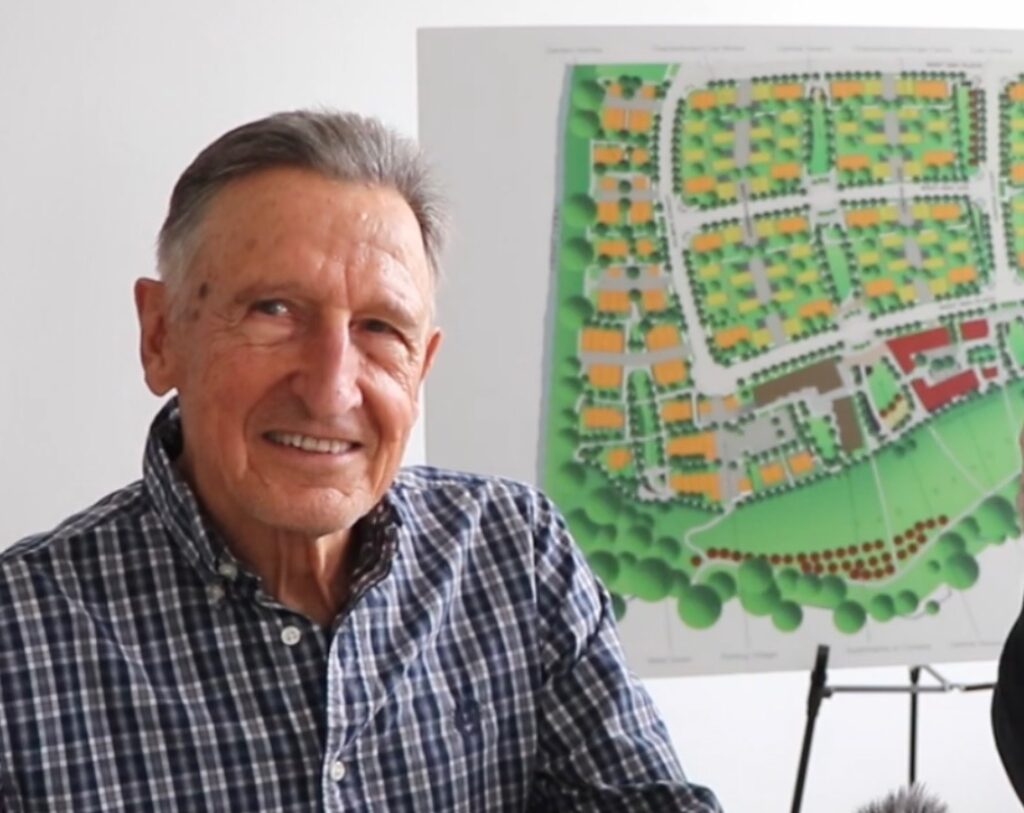
Imagine a net-zero community, one where every home is carbon neutral. It almost became a reality in a small master-planned community in Colorado.
When Norbert Klebl moved to Boulder, Colorado he began the work of turning his 1970s house into a more sustainable home. Recognizing that buildings are a source of greenhouse gas emissions, Norbert began to improve his suburban home by adding insulation and triple-paned windows. Once he perfected his air-tightening techniques, he had reduced his home energy requirements by 50 percent. He began sharing his sustainability technology with friends, but he realized that in order to have a real impact on the housing industry, he needed to find a way to scale it down to create affordable, decarbonized homes.
Klebl shifted his attention to developing a net-zero neighborhood in Arvada, Colorado. After five years on the project, all of the 28 homes he built are affordable and the residents reap savings in utilities throughout the year. The neighborhood is called Geos. Klebl used sustainable practices throughout the development, including holistic stormwater management to irrigate native landscapes, community gardens and orchards, as well as water-permeable walkways and community spaces, offering a pedestrian lifestyle with front porches and tree-lined streets. Building materials can often be a source of C02 emissions, so Geos houses are made from renewable sources, sustainably harvested wood, bamboo, cork, and recycled content ceramic tile. Each house is outfitted with energy-efficient appliances and every residence has a solar-powered garage to charge an electric car.
Klebl’s vision included mixed-use zoning to allow for corner stores and neighborhood businesses so that some residents can walk to work or access nearby services. There are single-family homes, alongside apartments and townhomes.
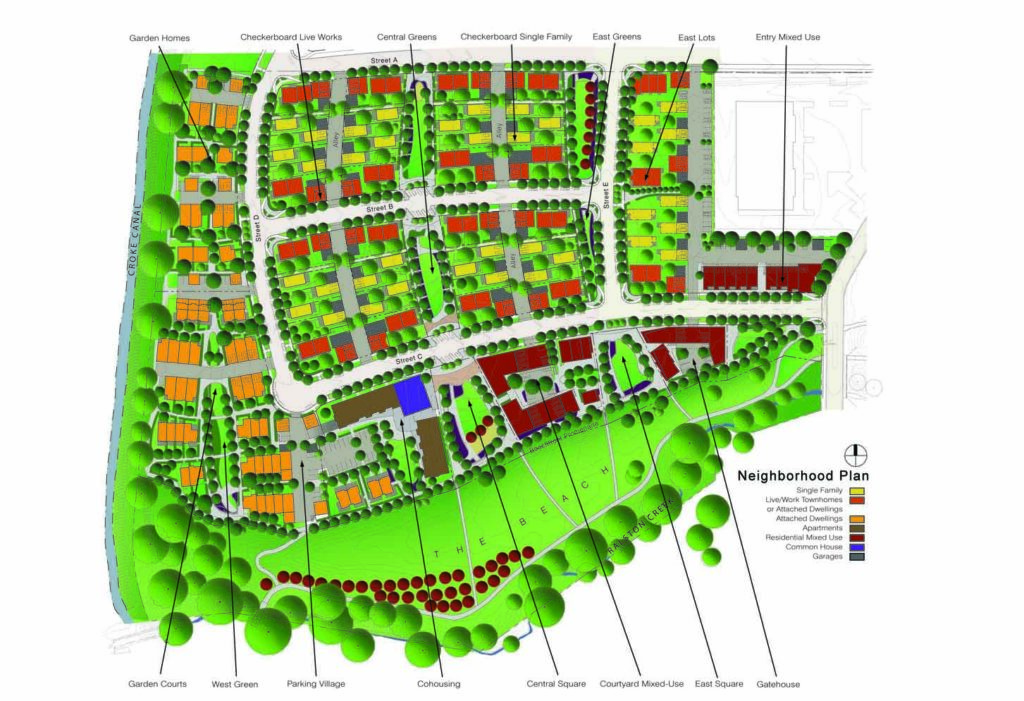
In an interview with TNT, Klebl described growing up in a small Austrian town where people shopped in local stores scattered throughout the neighborhood. “Everyone knew each other because they were out walking from store to store”, he says. Klebl values a connected neighborhood and suggests that “The first step in real sustainability is a functioning community.”
In order to accomplish his net-zero vision, Klebl carefully assessed the energy needs for each home and then reduced that amount by 75 percent prior to construction. Klebl achieved this with a three-pronged approach. The first consideration was the orientation of the house. The Geos neighborhood homes are laid out in a checkerboard pattern so that no house blocks the sunlight of another. and each home is positioned to maximize solar gains in the winter and minimize the heat of the sun in the summer. This passive solar design captures heat from Colorado sunshine through large, south-facing windows and keeps houses cool with minimal windows, shielded by solar panel overhangs, to the west.
The second priority in the construction of Geos houses is tight insulation. Most houses have poor seals and drafty corners, leaking all the inside air in about 3-4 hours.“The cheapest energy is to save energy,” says Klebl. He used exacting measures to minimize heat loss, including triple-paned windows and increased insulation, allowing Geos houses to retain inside air for about 20 hours. This attention to sealing the house allows it to hold onto the heat generated by the large windows and even the body heat of the residents inside.
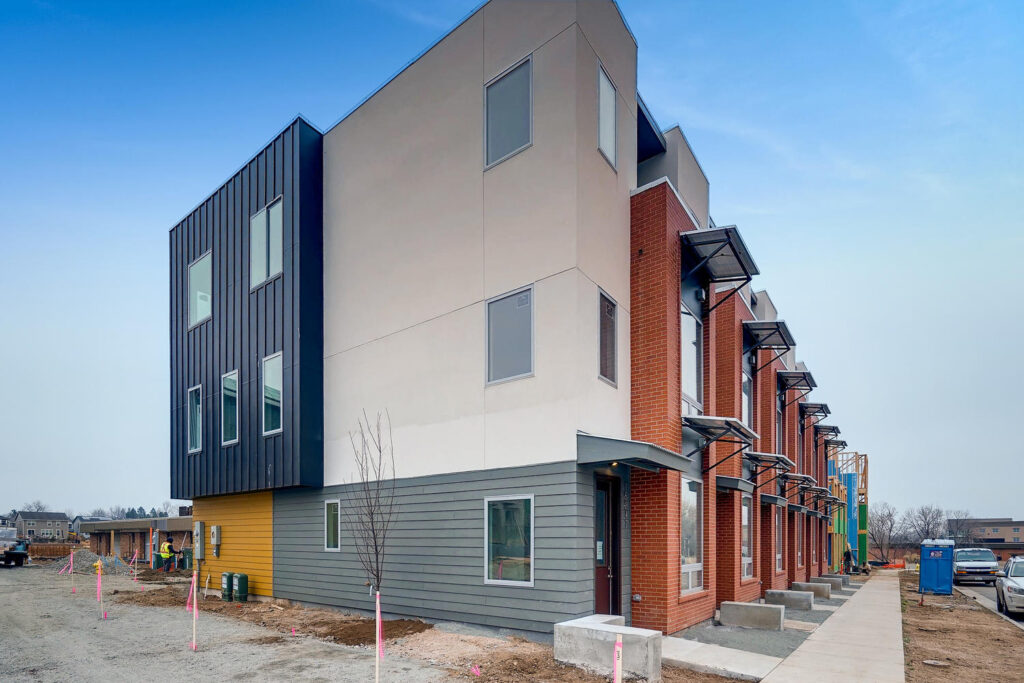
When a house is sealed to such a degree, air quality and air flow are of concern and that is the third piece of Klebl’s net-zero approach. Rather than a furnace, each house has an Energy Recovery Ventilation System. This system uses a heat pump to transfer the heat from the waste air inside to the incoming fresh air from outside. The ambient air in the house is replaced, but the heat pump recovers nearly all the energy from the discharged air on its way out of the ducts. While heat pumps are quite common in other countries, Klebl added a newly developed sensor that measures inside air quality every two hours. The sensor in the heat pump checks for CO2 levels and VOC’s (volatile organic compounds), refreshing the air in the house automatically as needed.
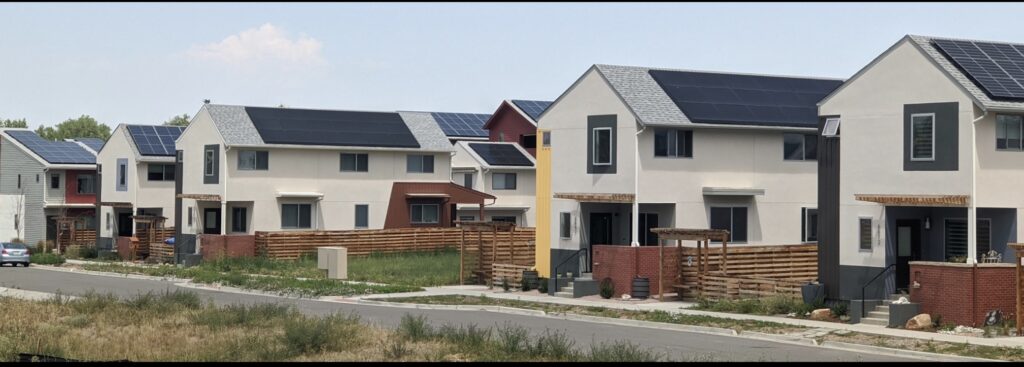
Klebl’s vision was not fully realized. He sold the 25 acre property where he had successfully built only 28 out of the proposed 282 homes. The new developer had declared the intention of continuing to build according to Klebl’s vision, but with a major change: the addition of natural gas, something Klebl sees as a major source of CO2 emissions,
Natural gas is increasingly under scrutiny for its role in releasing unsustainable amounts of methane. Over the past two years, 42 California cities and counties have banned or sought to limit gas lines in new buildings. In December 2021, New York City’s mayor, Bill de Blasio signed a bill into law that will ban the use of natural gas in any new construction under seven stories starting in December 2023. “New York City is proof that it’s possible to end the era of fossil fuels, invest in a sustainable future, protect public health, and create good-paying jobs in the process,” said de Blasio. “If the largest city in America can take this critical step to ban gas use, any city can do the same!”
While emissions from burning natural gas are touted as being better for the environment than burning coal, the methane released by fracking and drilling, along with ubiquitous gas leaks, negates any advantage it has. The recent findings in the August 2021 IPCC report shines a light on our need to move away from natural gas altogether; our atmospheric levels of methane are now higher than at any point in the last 800,000 years. While CO2 is longer lasting in the environment, methane has a much more immediate impact on crop loss, wildfires, rising sea levels, and extreme weather.
Despite the changing attitude towards gas, Klebl’s successor struggled to find builders to take on the project without natural gas piped in. In fact, Klebl had also struggled, but found small, local, custom home builders that were willing to try his methods. He has worked on-site alongside them for the last five years. “The industry is split between developers and builders, and everyone (electricians, H/VAC installers, plumbers, etc.) needs to be retrained to make the shift away from fossil fuels,” says Klebl. Despite the developer’s intention of following Klebl’s plans, without builders that are educated in new technology and design, large projects remain fossil fuel-dependent. Despite uproar from the Geos community, the remaining project site has now been fully piped for natural gas.
Cutting methane is a vital part of slowing global warming. There are green builders working to make more energy efficient homes, however, “We need to leapfrog this,” says Klebl. “We can’t afford to improve our performance every year by just 5 percent. We don’t have time for that.” New ordinances in New York City and other towns can help drive new solutions to the forefront, “leapfrogging” us to a greener future, but thanks to visionaries like Klebl, we know what’s possible when we think beyond the status quo.





